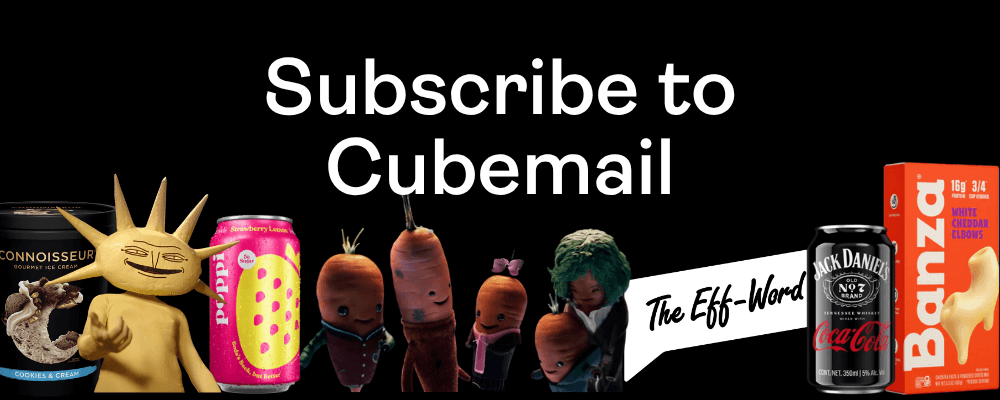
We use cookies to improve your experience on our website. By continuing to browse this website, you agree to our use of cookies. For more information, please refer to our privacy policy.

Successfully launching a new product into market is hard work. No actually, it’s really, really, really, really hard work! The reason why is because there are a myriad of things which must go right, all of which have precisely nothing to do with whether the idea itself is any good! The factors behind a successful new product launch can be distilled into 3 key areas:
1. Good idea
2. Good product
3. Good execution
First and foremost, innovation success starts with having a ‘good idea’. Successful new product innovation requires a complete understanding of the consumer; what they say, how they think, and what they’ll do. Cubery’s 3Cs framework predicts the likelihood of innovation success, with Captivate, Compel, and Connect diagnosing the psychological and behavioral drivers of decision making. Ideas which deliver against all 3Cs are more likely to endure over the long-term and deliver profitable outcomes for brand owners.
- Captivate: Does it break through the competitive clutter?
- Compel: Does the product offer meaningful advantages?
- Connect: Does it strategically align with the wider brand portfolio?
The second ingredient for innovation success is having a ’good product’, meaning the actual usage/consumption experience must live up to what’s promised. This relies on sensory research being undertaken prior to launch to ensure all experiential elements are fully optimal (taste, smell, sight, touch, etc.). It’s useful to think about concept testing as measuring what works best in theory, and sensory testing as what works best in practice. While an appealing idea, attractive pricing, or persuasive communications might be what gets consumers to try the product in the first place, if it’s not matched by an equally good experience people won’t come back for more (and repeat purchase is the ultimate litmus test for any new product).
The third ingredient for innovation success is ‘good execution’, which means the launch must be adequately supported through a combination of sales, marketing, and in-store activity. This helps predispose shoppers toward purchase and creates a seamless buying experience. Important elements to get right include product distribution, pricing strategy, packaging design, point of sale material, and wider communications. It’s therefore important that each of these elements is thoroughly researched and optimized prior to launch, which could include packaging testing, creative testing, pricing sensitivity analysis, and line range optimization.
Good execution is generally a bigger factor behind innovation success than how good the idea itself is. Or in other words, a well executed – but average – idea will likely achieve greater in-market success than a good idea executed averagely. Given the number of things which must go right in order to achieve innovation success, it becomes abundantly clear why the failure rate for new products is so high!
That’s why it’s crucial to identify ideas with the greatest potential as early as possible, avoiding investing precious time and money bringing new products to market that have little to no commercial viability. The 3Cs increase the likelihood of innovation success and give marketers the confidence to know they’re onto a winner. But how exactly do you create products which Captivate, Compel, and Connect? We’ve drawn upon the extensive learnings amassed from testing thousands upon thousands of new products globally and distilled them into the Innovation Effectiveness Playbook: The 9 secrets to creating transformational product ideas that fuel profitable business growth.
For new products to have the best chance of in-market success these guidelines should be shared far and wide with all key stakeholders as early as possible in the innovation development process. Use these learnings to ensure your next big idea delivers incremental sales and unlocks profitable growth. And, if ever in doubt, test with confidence using the 3Cs!


The 9 secrets to creating transformational product ideas that fuel profitable business growth.

Does the packaging leverage the brand’s distinctive properties, thus ‘looking like itself’ and being easily recognizable on-shelf?

Is the proposition unique and original? Is it unlike anything else currently available in the market? Is it truly innovative?

Are key benefits/claims different? Does the proposition offer a better alternative compared to the options currently available?

Does the proposition align with expectations of the brand? Portfolio synergy is crucial to avoid memory structures being fragmented.

Is the proposition clear, simple, and easy to understand? Are key benefits/claims communicated in a single-minded way?

Does the packaging stand out on shelf, grab busy shoppers’ attention, and spark curiosity to investigate the product further?

Do functional benefits ladder up to an ‘emotional’ end-promise, thus making the proposition ‘feel’ like a good choice?

Are key benefits/claims relevant? Does the proposition address a real (and ideally unmet) consumer need/desire?

Are key benefits/claims credible? Does the proposition offer a compelling reason to believe?
The hygiene factors for giving fully formed new products the best chance of in-market success.

Does the consumption/usage experience meet (and ideally exceed) expectations?

Does the value proposition stack up? Are the associated costs deemed acceptable?

Is the product stocked in the right places? Is it easy to find in-store? Is it easy to find on-shelf?

Do communications reinforce key benefits/advantages and mitigate barriers to purchase?

Is the proposition continually tweaked and evolved over time as market dynamics shift?
